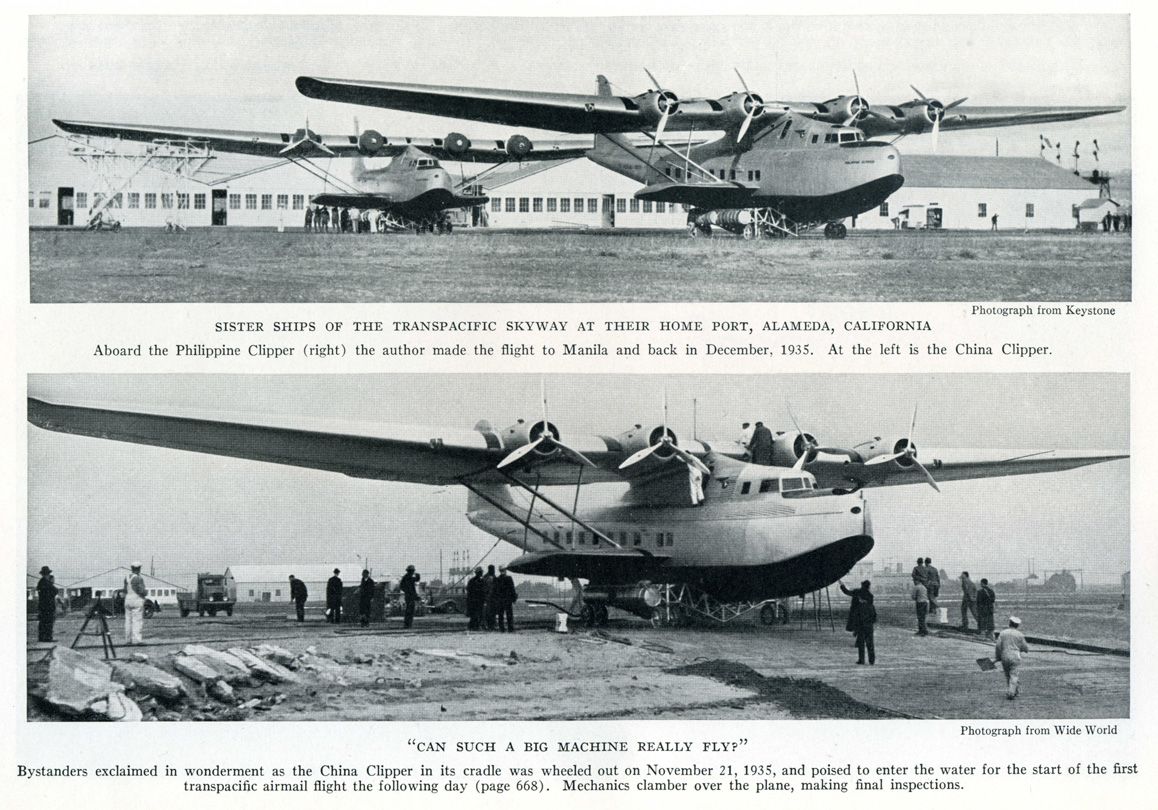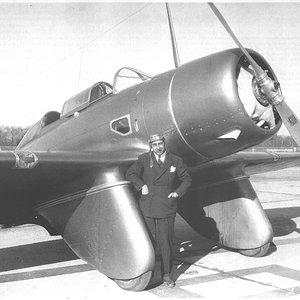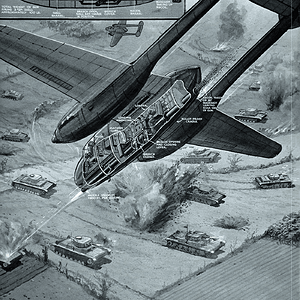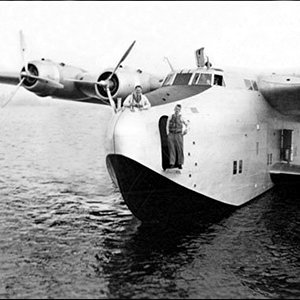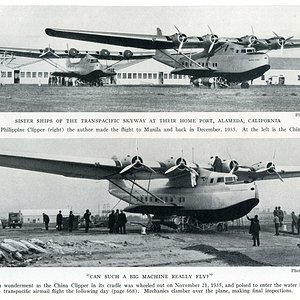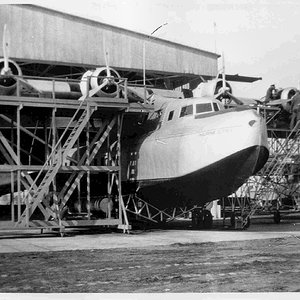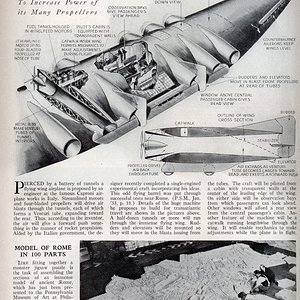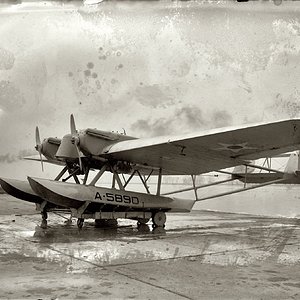Navigation
Install the app
How to install the app on iOS
Follow along with the video below to see how to install our site as a web app on your home screen.
Note: This feature may not be available in some browsers.
More options
You are using an out of date browser. It may not display this or other websites correctly.
You should upgrade or use an alternative browser.
You should upgrade or use an alternative browser.
Pan American China Clipper - 1935
A Pan American Airways Martin M-130 flying boat, the China Clipper, leaves San Francisco Bay for Manila carrying the first United States trans-Pacific air mail on Nov. 22, 1935. In the background is Coit Tower and the San Francisco skyline. (AP Photo/PanAm) Photo: AP / SF
On November 22, 1935 the Pan American Airways "China Clipper" a Martin 130 four-engined seaplane, lifted off from the San Francisco Bay at Alameda, California, beginning a trip in six days, with a flying time of 59 hours, 48 minutes. So heavily loaded that the pilot, Capt. Edwin Musick, flew under the Bay Bridge. After four overnight stops including Honolulu, Midway, Wake Island, and Guam, the Clipper arrived in Manila, in the Phillipine Islands.
The China Clipper and crew were seen heroes. Flying boats brought the runways with them. Yet it was four years before a commercial flight crossed the Atlantic. When transatlantic flights were bogged-down over landing rights, the Pacific became the destination, and Pan Am was ready with three Martin M-130 four-engined flying boats. They had the all-important range to fly from San Francisco Bay to Honolulu (21 hours! 2,400 miles, the first leg). And Pan Am's crews were skilled in radio-direction finding, celestial navigation -- and dead-reckoning for the trip to the most remote fleet of islands in the world! There were no passengers, just 110,000 letters. Overnighting at the first stop, Honolulu, they flew-on to stops on Midway Island, Wake Island, and finally Guam. On November 29 the China Clipper landed in Manila. They returned to Alameda on Dec. 6, 1935 -- with the mail for the U.S.
In 1936, the Clipper began carrying passengers. The service was first class and legendary, with fine food served on fine china. A one-way ticket to Manila, including overnight stays at Pan Am hotels in Honolulu, Midway, Wake and Guam, cost $950 - the equivalent of $14,650 in current (2010) dollars.
In 1939, the planes began flying out of Clipper Lagoon between Treasure Island and Yerba Buena Island on San Francisco Bay.
The original Martin seaplanes ultimately were replaced with much larger and luxurious Boeing B319 flying boats, which could carry 74 passengers, compared with only 18 for the Martins. The seaplanes flew until World War II, logged 2.4 million miles, and carried 3,500 passengers and 750,000 pounds of mail and air freight. When postwar service resumed, aviation advances had ended the era of flying boats.
A Pan American Airways Martin M-130 flying boat, the China Clipper, leaves San Francisco Bay for Manila carrying the first United States trans-Pacific air mail on Nov. 22, 1935. In the background is Coit Tower and the San Francisco skyline. (AP Photo/PanAm) Photo: AP / SF
On November 22, 1935 the Pan American Airways "China Clipper" a Martin 130 four-engined seaplane, lifted off from the San Francisco Bay at Alameda, California, beginning a trip in six days, with a flying time of 59 hours, 48 minutes. So heavily loaded that the pilot, Capt. Edwin Musick, flew under the Bay Bridge. After four overnight stops including Honolulu, Midway, Wake Island, and Guam, the Clipper arrived in Manila, in the Phillipine Islands.
The China Clipper and crew were seen heroes. Flying boats brought the runways with them. Yet it was four years before a commercial flight crossed the Atlantic. When transatlantic flights were bogged-down over landing rights, the Pacific became the destination, and Pan Am was ready with three Martin M-130 four-engined flying boats. They had the all-important range to fly from San Francisco Bay to Honolulu (21 hours! 2,400 miles, the first leg). And Pan Am's crews were skilled in radio-direction finding, celestial navigation -- and dead-reckoning for the trip to the most remote fleet of islands in the world! There were no passengers, just 110,000 letters. Overnighting at the first stop, Honolulu, they flew-on to stops on Midway Island, Wake Island, and finally Guam. On November 29 the China Clipper landed in Manila. They returned to Alameda on Dec. 6, 1935 -- with the mail for the U.S.
In 1936, the Clipper began carrying passengers. The service was first class and legendary, with fine food served on fine china. A one-way ticket to Manila, including overnight stays at Pan Am hotels in Honolulu, Midway, Wake and Guam, cost $950 - the equivalent of $14,650 in current (2010) dollars.
In 1939, the planes began flying out of Clipper Lagoon between Treasure Island and Yerba Buena Island on San Francisco Bay.
The original Martin seaplanes ultimately were replaced with much larger and luxurious Boeing B319 flying boats, which could carry 74 passengers, compared with only 18 for the Martins. The seaplanes flew until World War II, logged 2.4 million miles, and carried 3,500 passengers and 750,000 pounds of mail and air freight. When postwar service resumed, aviation advances had ended the era of flying boats.

